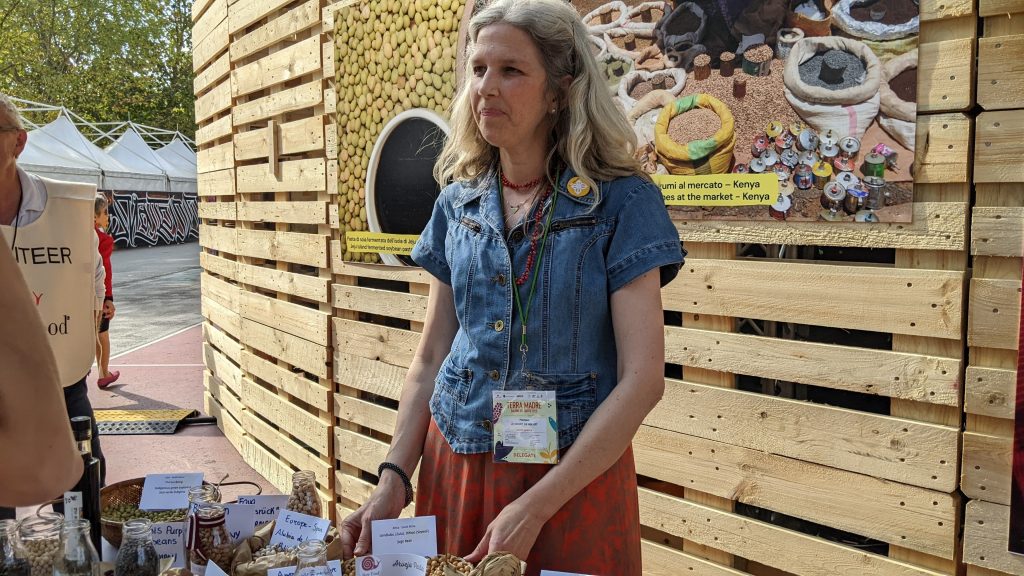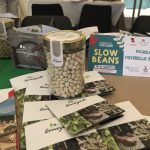Do you know anything about the Jugo Bean? Or the Black Cowpea?
In this second Behind the Seeds interview from Terra Madre, the international Slow Food convention in Torino, Melissa Le Court de Billot shares her knowledge about these underrated and often fallen into oblivion legumes.
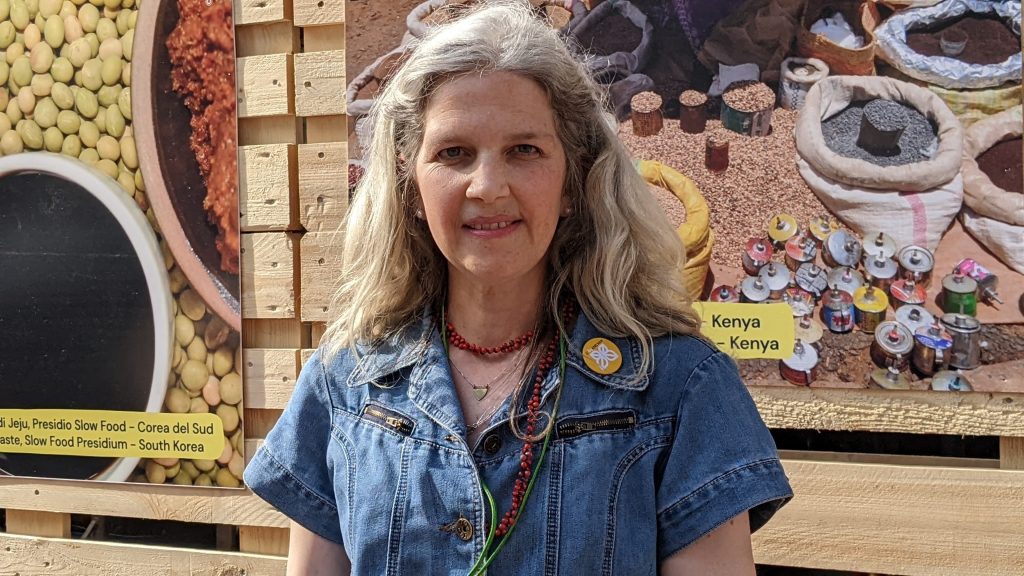
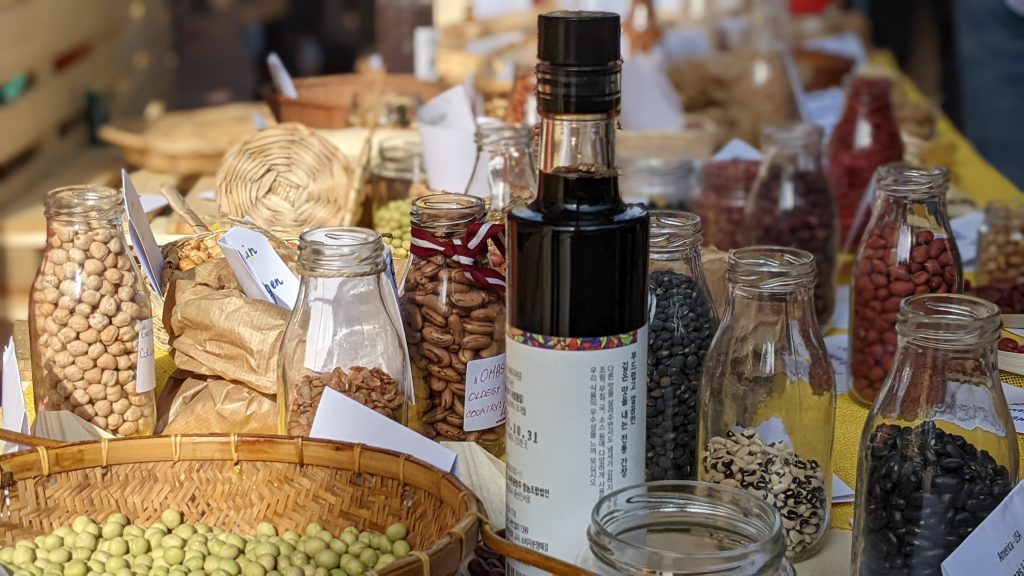
The Jugo Bean
Melissa showed the Global Bean team Jugo beans (Vigna subterranea), called Bambara groundnut in some other parts of Africa, and “Izindlubu” in Zulu or “Ditloo” in Zepedi. It is an African legume similar to peanut, which grows into a pod with two beans inside.
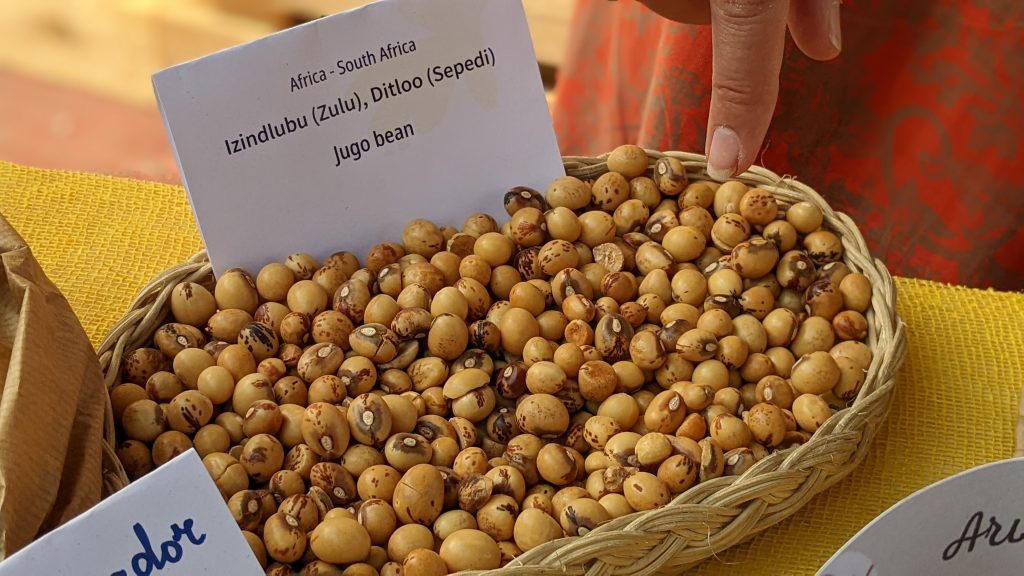
The Jugo Bean thrives in sub-Saharan Africa, being resistant to high temperatures and suitable for marginal soils where other crops cannot be grown. That is why, it is the third most important legume in semiarid Africa. To avoid water loss, the Jugo bean prefers sandy soils to grow.
Cooking method: boil the pod with a lot of salt during 1 hour, then eat the beans that are inside.
A lovely, salty snack!
The Black cowpea
The second legume Melissa showed to the Global Bean team was the Black cowpea, an indigenous African bean.
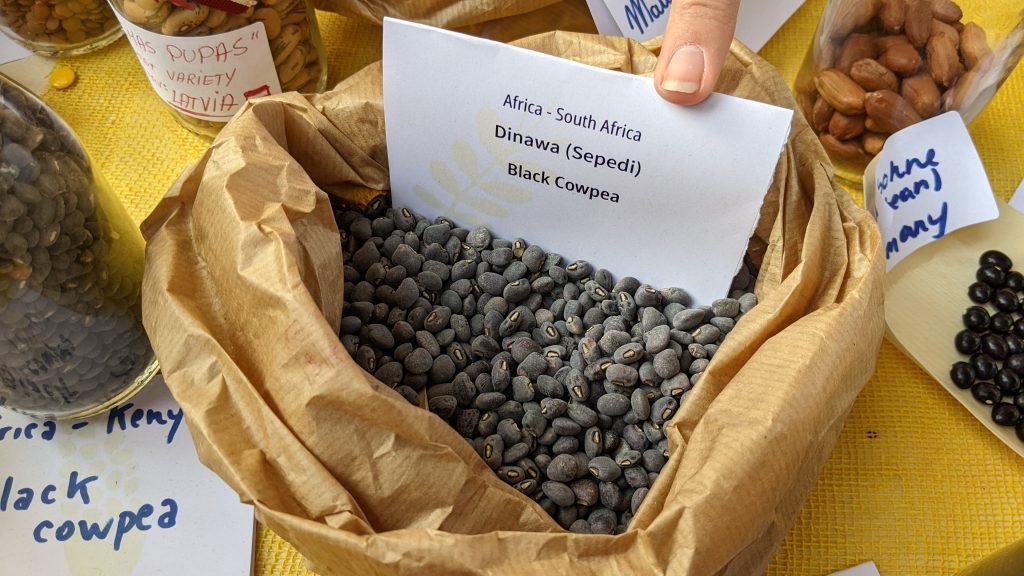
The black cowpea (Vigna unguiculata) is an annual herbaceous legume that has a very good tolerance for sandy soil and low rainfall. In Africa and in Asia, this crop is one of the most important ones in these semiarid regions.
The “black-eyed pea” is now commonly known and grown in the world, however the original species is developed from these Black cowpeas. During the slave trade, these beans were transported to America and became part of American cuisine, and the black-eyed pea was subsequently developed.
Cooking method: boil the beans with the pods and then eat the beans (like the Jugo beans). It is also possible to eat them like a green bean (with the pod) after boiling them with salt. The leaves are also edible, and can be eaten like spinach leaves. One traditional dish is a mix of black cowpea leaves, boiled with water and oil and mixed with peanut flour, which adds a nutty flavor to the dish.
So many ways to consume it, and yet few people do. For one, the bean has often fallen into oblivion, being mostly grown in rural areas, and impossible to find in shops. Secondly, most people prefer “popular”, imported greens like swiss chard, that need huge fertilizer inputs, and fuel. The black cowpea, however, doesn’t need either of them, as it grows locally and only requires a small amount of compost and water.
Melissa’s passion for beans
Melissa’s involvement in SlowFood and the Ark of Taste project got her thinking about questions like:
“What do we have locally? What did people eat before we had all this processed food in the shops?”
And this led to her meeting like-minded people, exchanging with farmers, sharing seeds with them and starting seeds banks.
What they need: a market. “Customers like us, who live in the cities”, and who might, when presented with them, grow interest in these “healthy, interesting foods, part of South African cultural heritage, that have a story to them.”
